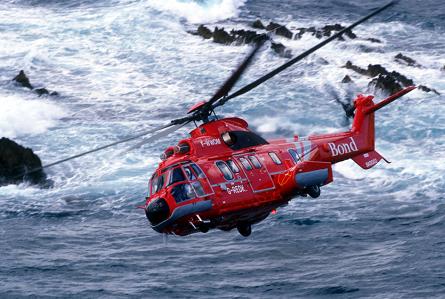Pilot judgement and actions is the most frequent single contributory factor in European helicopter accidents, according to a European Helicopter Safety Analysis Team study. The study is aimed at understanding rotary wing accidents so as to develop a strategy to reduce risks.
The EHSAT's findings mirror almost precisely the first-ever study under the International Helicopter Safety Team's (IHSS) remit to reduce global helicopter accident rates by 80% by 2016. The EHSAT set itself the task of studying completed official accident reports for accidents that took place from 2000 to 2005, and the first data set - on which this preliminary report is based - has assessed 186 helicopter events that took place in that period, estimated to be about 25% of the reports that are, or will become, available.
The first study under the IHSS remit was carried out by the US Joint Helicopter Safety Analysis Team and published in 2007. All the regional studies are being carried out using the same human factors analysis and classification system (HFACS) codes, which ensures the information derived from official accident reports is analysed according to a standard taxonomy, and that the data that emerges can be used to track global patterns and trends once world regions are all reporting.
The correlation between the EHSAT and JHSAT studies is remarkable, but this had been predicted by analysts. Both found "pilot judgement and actions" was the top single causal factor in helicopter accidents, being present in 68% of the European events and 77% of those in the USA.
 |
|---|
© Eurocopter |
Second on both lists came operator safety culture, found to be contributory in 48% of European and 46% of US accidents. The first minor split between the two studies shows in the contributory factors that come third and fourth on the list: in Europe, pilot situational awareness came third (38%) and ground duties fourth (35%), whereas in the USA those two were reversed, with ground duties contributory in 38% of cases and pilot situational awareness in 26% of accidents.
Ground duties include mission planning and aircraft pre- and post-flight duties. The difference in pilot situational awareness may reflect the higher risk of encountering instrument meteorological conditions in Europe.
The EHSAT report finds that pilot decision-making comes top or second as a contributory factor no matter what kind of helicopter operation is involved, whether commercial air transport, aerial work, or general aviation. A preliminary assessment of the recommendations for action that are likely to emerge is expected to have training at the top of the list of priorities, with action on operator management and safety culture next and regulatory/guidance material third, but the team says the priorities have are still being assessed.
An example of the sort of training recommendation it expects to see, says the team, is better training for specific environments (mountains etc) or missions, and on the organisational side, the adoption of simple safety management systems tailored to the type and size of operation. The latter was a primary recommendation from the US JHSAT.
Source: Flight International























